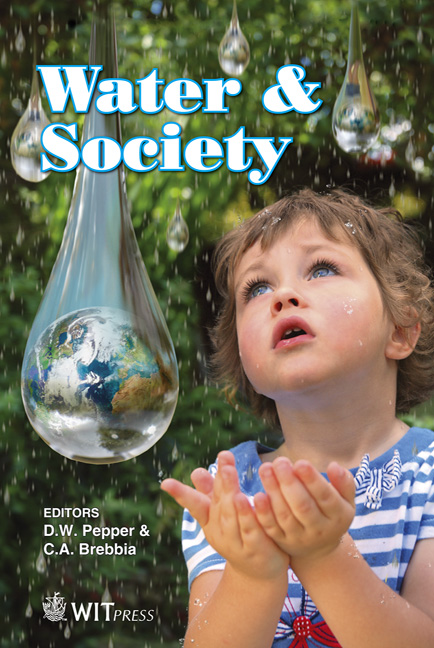The Dynamics Of IWRM Policies In A Water Scarce Catchment In Kenya, Application Of WEAP21 Model
Price
Free (open access)
Transaction
Volume
153
Pages
12
Page Range
455 - 466
Published
2011
Size
3,031 kb
Paper DOI
10.2495/WS110401
Copyright
WIT Press
Author(s)
E. M. Akivaga, F. A. O. Otieno, E. C. Kipkorir, J. Kibiiy & V. O. Okumu
Abstract
Integrated water resources management (IWRM) is being embraced by many countries. Kenya is implementing a new water policy formulated along IWRM principles. The newly formed river basin organisations grapple with issues of sustainability, water allocation, resource quality objectives, equity, environmental flows among others. Kenya experiences water scarcity and stress. This research applied the Water Evaluation and Planning System (WEAP21) model to test a systems approach in evaluating the impact of changes in water policy and water development in Perkerra catchment in Kenya. The upper catchment has humid to semi-humid climatic conditions while the lower catchment experiences semi-arid to arid climatic conditions. Biophysical and human interventions were modelled in WEAP21. The scenarios analysed the impact of the new water policy of equitable water allocation, maintaining the reserve and ecological flows. The impact of increasing water storage and irrigation efficiency was evaluated. The reference scenario was validated using flows at the catchment observation station 2EE7B. The Tennant method was used to determine minimum environmental flows. From the analyses, one dam project will reduce water deficit by 5%. However, higher irrigation efficiency reduces the deficit by 15%.
Keywords
Perkerra, integrated water resources management, demand, water allocation, environmental flows, WEAP21, water scarcity





